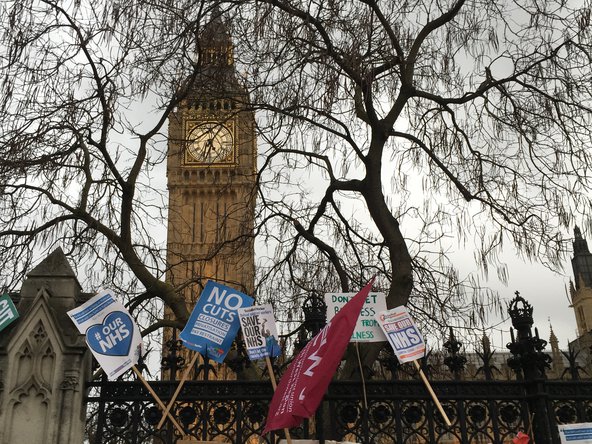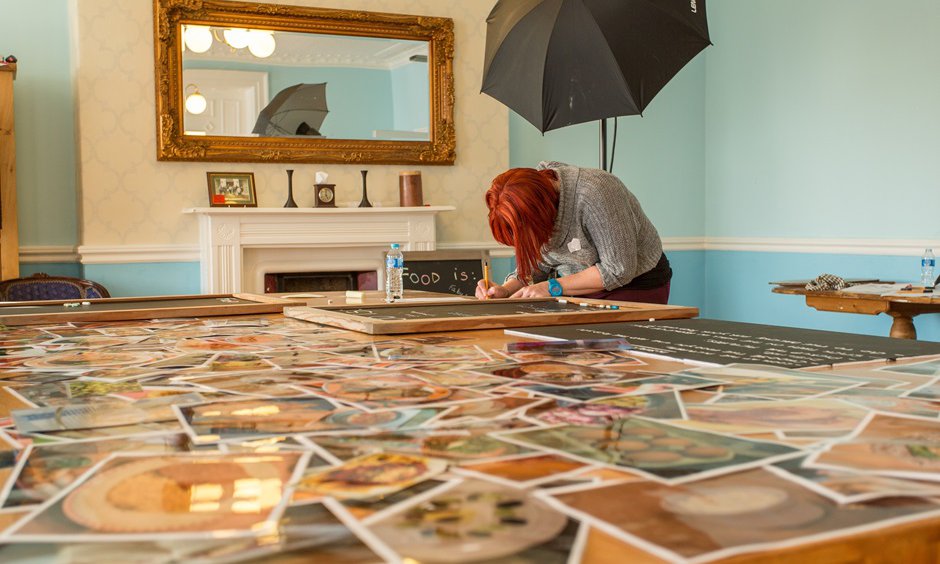How can the public effect real change in Parliament?
by Cristina Leston-Bandeira and Louise Thompson
16 Apr 2019
This blog post is part of our Summer Showcase series, celebrating our free festival of ideas for curious minds.
In March 2019, Prime Minister Theresa May made a statement to the nation about progress towards the UK’s withdrawal from the European Union, in which she said that she was very clear about one thing: that “you, the public, have had enough” of MPs talking about nothing else but Brexit. The following morning, the UK Government and Parliament petitions website crashed as millions of people (helped partly by celebrities’ tweets such as this one from the actor Hugh Grant) went to sign a petition to revoke Article 50 and remain in the EU, breaking the current record for the petition to parliament with the highest number of signatures. The volume of signatures required it to be considered for debate in Parliament, just like other petitions that have met the 100,000-signature threshold, including those on high heels and dress codes (over 150,000 signatures), funding for brain tumour research (over 100,000 signatures) and banning the sale of fireworks to the public (over 300,000 signatures).
But the link between the public and Parliament hasn’t always been like this. If we go back even 50 years, we would see little evidence of any direct interaction between parliament and public; for the most part, parliament’s work was invisible to the outside and the public’s input was mainly limited to voting every five years. Although politics was widely reported, it was much harder than it is today to see parliamentary business as it happened. This is because cameras were not allowed in the Lords or Commons chambers until 1983 and 1989 respectively. This marked a key turning point in the relationship between Parliament and the public, making the work of MPs and peers much more accessible to the general public.
In the 21st century we’ve witnessed a further turning point in the links between the institution and the wider public, as different areas of Parliament have sought to gather and integrate the public’s views on topical issues.”
Today, most of us are familiar with the sight of the Prime Minister standing at the despatch box during Prime Minister’s Question Time, or of the House of Commons Speaker maintaining order in the chamber, as these are regularly broadcast on mainstream media channels. The introduction of a parliamentary website in the mid-1990s increased this accessibility further, providing outlets for the public to find out who their MP is, learn what they have been doing in parliament and watch or read about a wide range of parliamentary business. Besides daily business, ParliamentTV hosts an extraordinary archive of chamber and committee business and records high viewing figures. Over 35,000 people watched the Treasury Select Committee’s quizzing of Boris Johnson on Brexit in March 2016 and petitions debates are regularly the most-watched parliamentary events, with thousands of people tuning in. Much of this is the end result of key reforming reports, namely the Modernisation Committee’s Connecting Parliament with the Public report in 2004, a key turning point in the relationship between the public and parliament. This led to the creation of an outreach programme and a comprehensive schools programme which has brought Parliament firmly into the classroom, eventually resulting in the opening of a new Parliamentary Education Centre in 2015.
Increasing the visibility and accessibility of Parliament was an important step forward, but in the 21st century we’ve witnessed a further turning point in the links between the institution and the wider public, as different areas of Parliament have sought to gather and integrate the public’s views on topical issues. We saw a good example of this in 2012, when the Education Select Committee gathered over 5,000 questions through Twitter using the #AskGove hashtag, before putting a selection of them to the Secretary of State himself in a televised evidence session. A similar session with Communities and Local Government Minister Eric Pickles came the following year, using the #AskPickles hashtag, which led to a change in law.
Also in 2013, the House of Commons ran a pilot whereby members of the public could use a web forum to add their own comments to a piece of legislation at the same time as it was being debated and scrutinised by MPs. Known as public reading stage, over 1,400 comments were submitted by over 1,000 individuals across a short two-week period and were later submitted to MPs in a summary format as written evidence at the bill’s committee stage. This type of public consultation has since become much more regular in the work of Select Committees. For example, in 2017 the Work and Pensions Committee ran a web forum which received nearly 3,000 comments from people affected by PIP and ESA assessments. This would lead to a report focusing specifically on the public’s experiences, which shaped government policy.

So today there are far more outlets for members of the public to interact with parliament, raising issues which are of concern to them. But what impact does it actually have? Our research into the public reading stage pilot found that the portrayal of real people’s experiences was one of the key benefits of this type of interaction, helping MPs to move beyond the ‘Westminster bubble’ and appreciate how policies were affecting the lives of their constituents. We’ve seen this elsewhere too, as the testimony given to the Petitions Committee as part of their inquiry into brain tumour research demonstrates well. Our research also highlighted how the integration of the public's comments with more traditional parliamentary tools is key for success. For the public reading pilot, this sort of integration did not extend far enough. However, more recently we can see evidence of this type of integration happening more. For example, when police officer Dave Wardell began a petition in 2016 asking for police dogs and horses to be given ‘protection that reflects their status if assaulted in the line of duty’, he attracted over 127,000 signatures and a debate in Parliament. The petition came to the attention of his local MP, Oliver Heald, who went on to table a Private Members’ Bill on Service Animals (Offences), also known as ‘Finn’s Law’, to create a clear offence of attacking a service animal. Thanks to cross-party support the bill is on its way to becoming law, having passed all its Commons stages and as of March 2019 is currently awaiting debate in the House of Lords (you can follow its progress). Equally, the Women and Equalities Committee utilised a petition on transgender rights to reach out to the transgender community as part of their enquiry on Transgender equality. The creator of the petition went on to give oral evidence and informed one of the committee’s recommendations to reform the process through which transpeople can define their own gender.
There can be a mismatch between public expectations, often founded on hopes of instant change, and the reality of what it takes to change a law, which is a long and often convoluted process.
Not only is Parliament in the 21st century more visible and accessible than ever before, but there is also a much greater number of outlets through which members of the public and parliamentarians can engage and interact with each other. What is often still missing though, as our research showed, is an integration of these public engagement initiatives into the actual parliamentary business. Institutions like the House of Commons are often slow moving and there can be a mismatch between public expectations, often founded on hopes of instant change, and the reality of what it takes to change a law, which is a long and often convoluted process. Government still dominates policy-making, but there are now clearer channels for parliament to consult the public on issues and utilise these to amend legislation.
Cristina Leston-Bandeira is Professor of Politics at the University of Leeds. She tweets @estrangeirada. Dr Louise Thompson is Senior Lecturer in Politics at the University of Manchester. She tweets @louisevthompson. They were awarded a BA / Leverhulme Small Research Grant in 2015 to examine the House of Commons public reading stage pilot. You can read their final report ‘Letting the Public in on the Act’.


